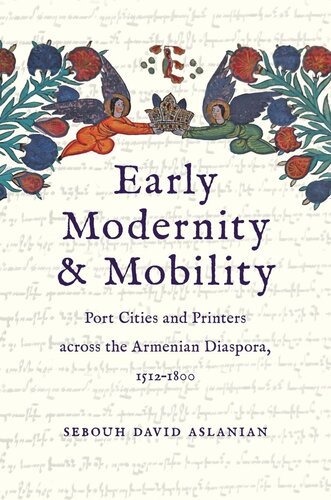

Most ebook files are in PDF format, so you can easily read them using various software such as Foxit Reader or directly on the Google Chrome browser.
Some ebook files are released by publishers in other formats such as .awz, .mobi, .epub, .fb2, etc. You may need to install specific software to read these formats on mobile/PC, such as Calibre.
Please read the tutorial at this link: https://ebookbell.com/faq
We offer FREE conversion to the popular formats you request; however, this may take some time. Therefore, right after payment, please email us, and we will try to provide the service as quickly as possible.
For some exceptional file formats or broken links (if any), please refrain from opening any disputes. Instead, email us first, and we will try to assist within a maximum of 6 hours.
EbookBell Team

0.0
0 reviewsA history of the continent-spanning Armenian print tradition in the early modern period
Early Modernity and Mobility explores the disparate yet connected histories of Armenian printing establishments in early modern Europe and Asia. From 1512, when the first Armenian printed codex appeared in Venice, to the end of the early modern period in 1800, Armenian presses operated in nineteen locations across the Armenian diaspora. Linking far-flung locations in Amsterdam, Livorno, Marseille, Saint Petersburg, and Astrakhan to New Julfa, Madras, and Calcutta, Armenian presses published a thousand editions with more than half a million printed volumes in Armenian script.
Drawing on extensive archival research, Sebouh David Aslanian explores why certain books were published at certain times, how books were sold across the diaspora, who read them, and how the printed word helped fashion a new collective identity for early modern Armenians. In examining the Armenian print tradition Aslanian tells a larger story about the making of the early modern Armenian diaspora. Arguing that “confessionalism” and the hardening of boundaries between the Armenian and Roman churches was the “driving engine” of Armenian book history, Early Modernity and Mobility makes a revisionist contribution to the early modern origins of Armenian nationalism.